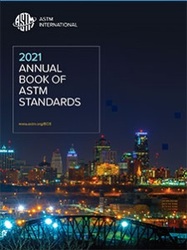Description
1.1 This test method covers the determination of the degree and rate of anaerobic biodegradation of plastic materials in high-solids anaerobic conditions. The test materials are exposed to a methanogenic inoculum derived from anaerobic digesters operating only on pretreated household waste. The anaerobic decomposition takes place under high-solids (more than 30 % total solids) and static non-mixed conditions.
1.2 This test method is designed to yield a percentage of conversion of carbon in the sample to carbon in the gaseous form under conditions found in high-solids anaerobic digesters, treating municipal solid waste (1, 2, 3, 4). This test method may also resemble some conditions in biologically active landfills where the gas generated is recovered and biogas production is even actively promoted, for example, by inoculation (codeposition of anaerobic sewage sludge, anaerobic leachate recirculation), moisture control in the landfill (leachate recirculation), and temperature control (short-term injection of oxygen, heating of recirculated leachate) (5, 6, 7).
1.3 This test method is designed to be applicable to all plastic materials that are not inhibitory to the microorganisms present in anaerobic digesters operating on household waste.
1.4 The values given in SI units are to be regarded as the standard.
1.5 This test method is equivalent to ISO DIS15985.
1.6 This standard does not purport to address all of the safety concerns, if any, associated with its use. It is the responsibility of the user of this standard to establish appropriate safety and health practices and determine the applicability of regulatory limitations prior to use. Specific hazards are given in Section 8.
Product Details
- Published:
- 08/10/2002
- Number of Pages:
- 6
- File Size:
- 1 file , 63 KB
- Redline File Size:
- 2 files , 110 KB






